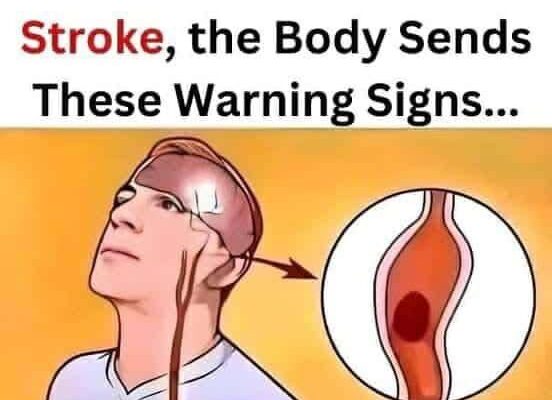Stroke is a leading cause of disability and death worldwide, but what many people don’t realize is that the body often sends warning signs weeks, or even months, before a major event occurs. Recognizing these signals can save your life or the life of someone you care about.
Early Warning Signs of a Stroke
Some of the most common early symptoms that might indicate an impending stroke include:
- Numbness or Weakness: Sudden numbness or weakness, particularly on one side of your body, affecting the arms, legs, or face.
- Confusion: Difficulty understanding or processing information, often accompanied by trouble speaking.
- Difficulty Walking: Loss of balance, dizziness, or unsteadiness that comes on without explanation.
- Blurred Vision: Sudden trouble seeing in one or both eyes.
- Severe Headaches: Unexplained, intense headaches that might feel different from typical migraines.
These symptoms should never be ignored, even if they are mild or seem to resolve on their own.
The Importance of Transient Ischemic Attacks (TIAs)
A Transient Ischemic Attack, often called a “mini-stroke,” can be an alarming precursor to a full-blown stroke. TIAs occur when there is a temporary blockage of blood flow to the brain, causing stroke-like symptoms that typically resolve within minutes or hours.
Studies show that about 15% of people who experience a TIA will have a major stroke within three months, with nearly half of those strokes occurring within the first two days. If you experience a TIA, it is a medical emergency, even if the symptoms disappear. Immediate evaluation by a healthcare professional can help prevent a more severe stroke.
Act FAST: The Golden Rule for Stroke Symptoms
The acronym FAST is a simple way to recognize the signs of a stroke and respond quickly:
- F: Face drooping – Is one side of the face numb or drooping? Can the person smile?
- A: Arm weakness – Is one arm weak or numb? Ask the person to raise both arms; does one drift downward?
- S: Speech difficulty – Is speech slurred or hard to understand? Can the person repeat a simple sentence like, “The sky is blue” correctly?
- T: Time to call 911 – If someone shows any of these symptoms, call emergency services immediately, even if the symptoms subside.
Time is of the essence during a stroke. Seeking prompt medical attention can significantly improve outcomes.
Understanding Your Risk Factors
Certain factors can increase your likelihood of experiencing a stroke. By managing these, you can take proactive steps toward prevention:
- High Blood Pressure: The leading risk factor for stroke, often dubbed the “silent killer” because it has no symptoms.
- Diabetes: Poorly controlled blood sugar levels can damage blood vessels and lead to stroke.
- Smoking: Tobacco use accelerates damage to blood vessels and doubles the risk of stroke.
- High Cholesterol: Excess cholesterol can lead to plaque buildup in arteries, increasing the risk of blockages.
- Heart Disease: Conditions like atrial fibrillation (irregular heartbeat) significantly increase stroke risk.
- Obesity and Sedentary Lifestyle: Being overweight or inactive contributes to other risk factors like hypertension and diabetes.
Preparation Could Save Your Life
Being proactive can make a huge difference in your response to a stroke. Here are some steps you can take now:
- Identify Your Risk: Talk to your doctor about your personal risk factors and work to manage them effectively.
- Locate Stroke Centers: Find out where the nearest certified stroke center is in your area and ensure your family knows its location.
- Keep a Medication List: Maintain an up-to-date list of all your medications, including dosages, and share it with loved ones.
- Practice a Healthy Lifestyle: Adopt a heart-healthy diet, engage in regular physical activity, and avoid smoking and excessive alcohol consumption.
Final Takeaway
A stroke doesn’t usually strike without warning. Your body often sends out early signals like numbness, confusion, or balance issues, which should never be ignored. A TIA can be an even more urgent red flag, highlighting the need for immediate medical evaluation.
Acting fast when you or someone else shows symptoms can make all the difference. With awareness, preparation, and timely medical care, the potentially devastating effects of a stroke can often be prevented or minimized.



